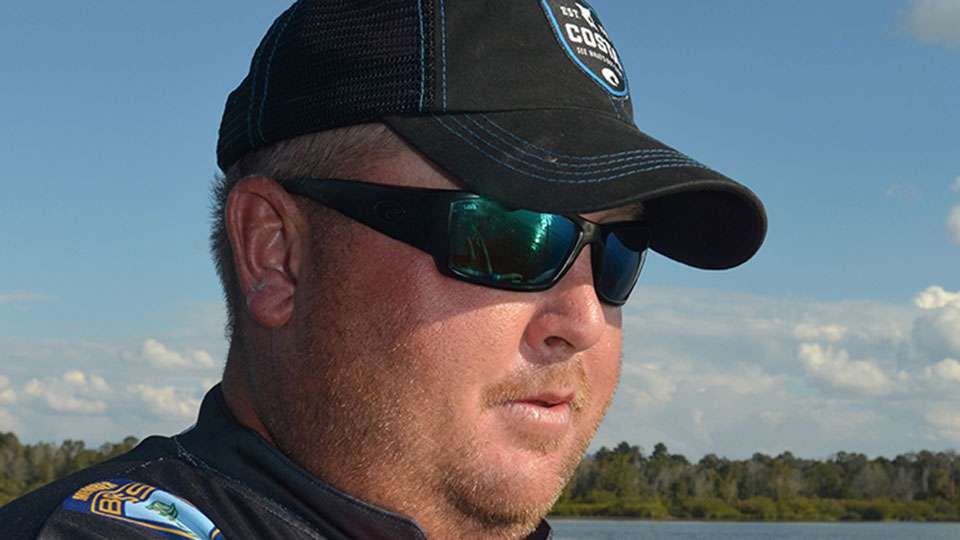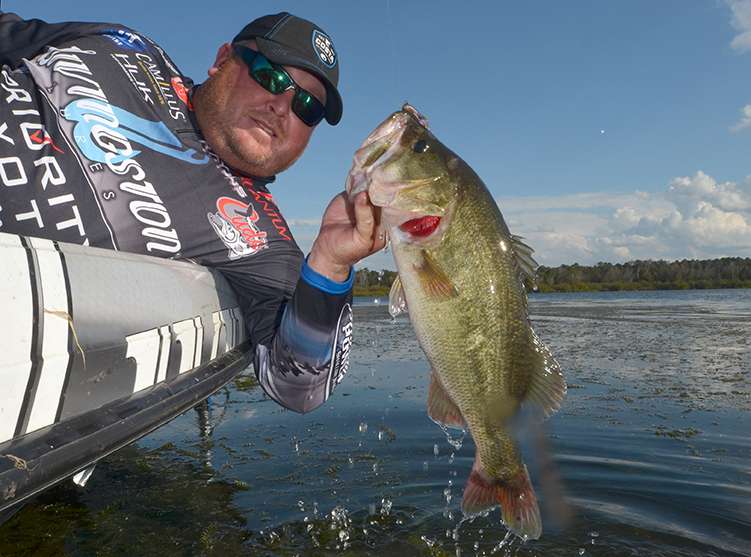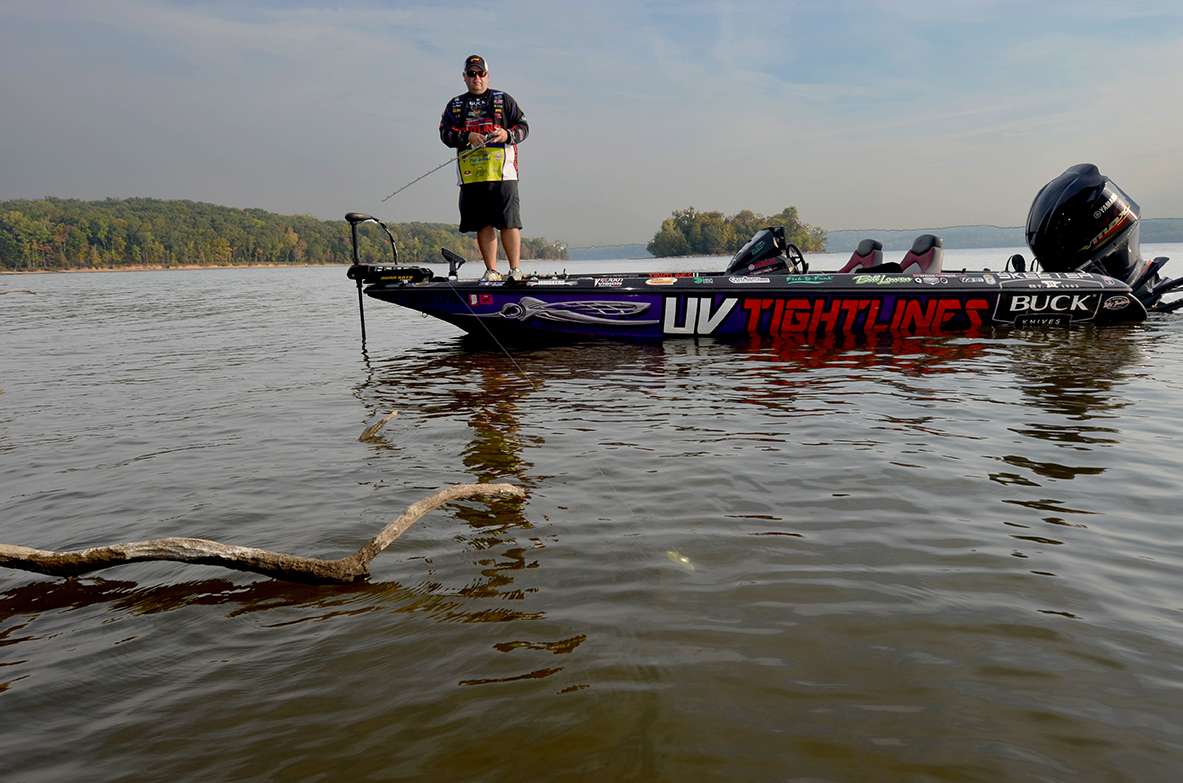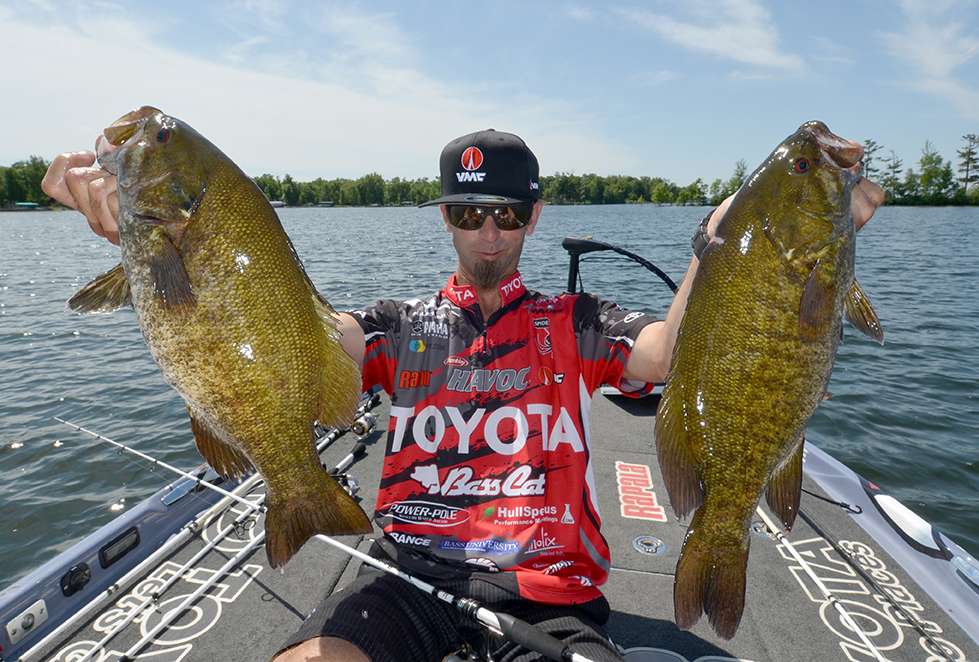
It’s hard to overstate how important Polarized sunglasses are for bass fishing success, especially when sight fishing for spawners. You simply can’t go wrong investing in the best quality polarized sunglasses you can reasonably afford.
Regardless of which brand you choose, the final make-or-break decision is which lens color to go with. Everyone’s eyes are different and the color that works well for one angler may not be the best choice for another.
Selecting the right lens color for you could be the difference between blind bed fishing and watching a 10-pound blimp nab your bait. Below are the lens colors that four Elite Series pros have settled on.
Jacob Powroznik
Sunrise Silver Mirror and Copper Lenses

Powroznik opts for Costa Del Mar’s Sunrise Silver Mirror lenses during lowlight conditions, such as first thing in the morning. This polarized lens allows 30 percent light transmission.
“That lens just lightens everything up,” Powroznik said. “I can see better with it before the sun gets up.”
When the sun gets bright around midmorning, he switches to Costa sunglasses that sport copper lenses, which allow only 12 percent light transmission. Many other Elite pros favor copper, brown or amber lenses, which they claim provide the best contrast for bed fishing under most conditions.
However, when Powroznik is bed fishing in Florida’s dark tannic water, he claims that the Sunrise Silver Mirror lenses help him see into the water better than copper lenses, even under the midday sun.
Melinda Hays, the bass community leader at Costa Del Mar, boasts that all of their polarized lenses feature 580 technology that enhances greens and reds and decreases harsh blue and yellow light. The result is higher contrast and less eyestrain.
She added that Costa’s polycarbonate lenses received a 7+ rating from the Bayer Abrasion Test. The industry average score is 3 to 5. As scratch resistant as Costa’s polycarbonate lenses are, they fall far short of Costa’s glass polarized lenses in this respect, Hays points out. No plastic lens material beats glass for scratch resistance and optical clarity.
The drawback with glass lenses is that they are heavier and less impact resistant than the tough plastic lenses found in high-end polarized sunglasses. When a snagged sinker snaps free and comes at your face like a speeding bullet, you tend not to favor glass.
Timmy Horton
Amber Lenses
Timmy Horton relies on Solar Bat’s amber polarized polycarbonate lenses exclusively. They were instrumental on Day 4 of the Elite Series tournament at Lake Okeechobee in February of 2017, which he won. Strong north winds had muddied the water Horton had fished on the first three days. That forced him to find cleaner water he was not as familiar with.
“I was drifting with the wind and casting ahead of the boat to shiny spots on the bottom,” he said. “The amber lenses let me see those spots far enough away that I could fish them before the boat drifted too close.”
Horton also sticks with amber lenses because his eyes have grown accustomed to looking through this hue. He reasons that switching to a different color would be confusing.
Then again, Solar Bat claims that their green Mossback polarized lens is superior for bed fishing. It bleaches out browns, including muddy water, and enhances greens, which makes bass and grass more visible. If Mossback sunglasses are not the best you have ever used for sight fishing, you can return them in new condition with 21 days for a full refund.
Bill Lowen
Copper Lenses

Lowen dotes on Vicious Vision’s Pro Series polarized sunglasses that feature Xperio UV lenses.
“I’ve fished side by side with guys wearing other sunglasses and I can see things they can’t,” Lowen said.
At 5-feet, 9-inches in height, Lowen used to feel that taller anglers had an advantage on him for sight fishing. That changed when he donned Vicious Pro Series sunglasses.
“They gave me such good depth perception into the water I actually felt taller,” he said.
Lowen has experimented with a variety of lens colors to maximize his vision under different situations. He has settled on copper lenses for everything.
“Copper is good when its cloudy, when its sunny and in clear and tannic water.”
Dr. Doug Jordan, owner of Vicious Vision, has been a practicing eye care professional for more than 20 years and an avid outdoorsman all his life. He claims that Xperio UV lenses have the highest UV protection and 20 percent greater contrast than any other lens available.
Xperio UV lenses are also thinner, lighter and more scratch resistant, Jordon added. Also, the digitally ground lenses let your eyes see sharply through any part of the lens, not just the center.
Michael Iaconelli
Amber, Gray and Yellow Lenses

Iaconelli carries three sets of polarized sunglasses in his boat that have three different lens colors. Under dark conditions, such as early morning, evening, cloudy, rainy or foggy, he dons sunglasses with amber lenses.
“Amber illuminates everything more,” Iaconelli says.
When the sun is intense and the water is still, he switches to darker gray lenses. When bed fishing, Iaconelli relies on yellow lenses.
“A high contrast yellow lens helps me see light spots on the bottom and sand spots in the middle of a weed flat,” Iaconelli says. “Yellow is my bed fishing lens.
Iaconelli points out that he will be introducing his signature series NINES polarized sunglasses at the 2017 Bassmaster Classic. They will be available in amber, gray and yellow lenses.
“They’ll sell for around $50 bucks,” Iaconelli says. “You can have three polarized sunglasses with different color lenses for what you’d pay for a single pair of some other sunglasses.”





